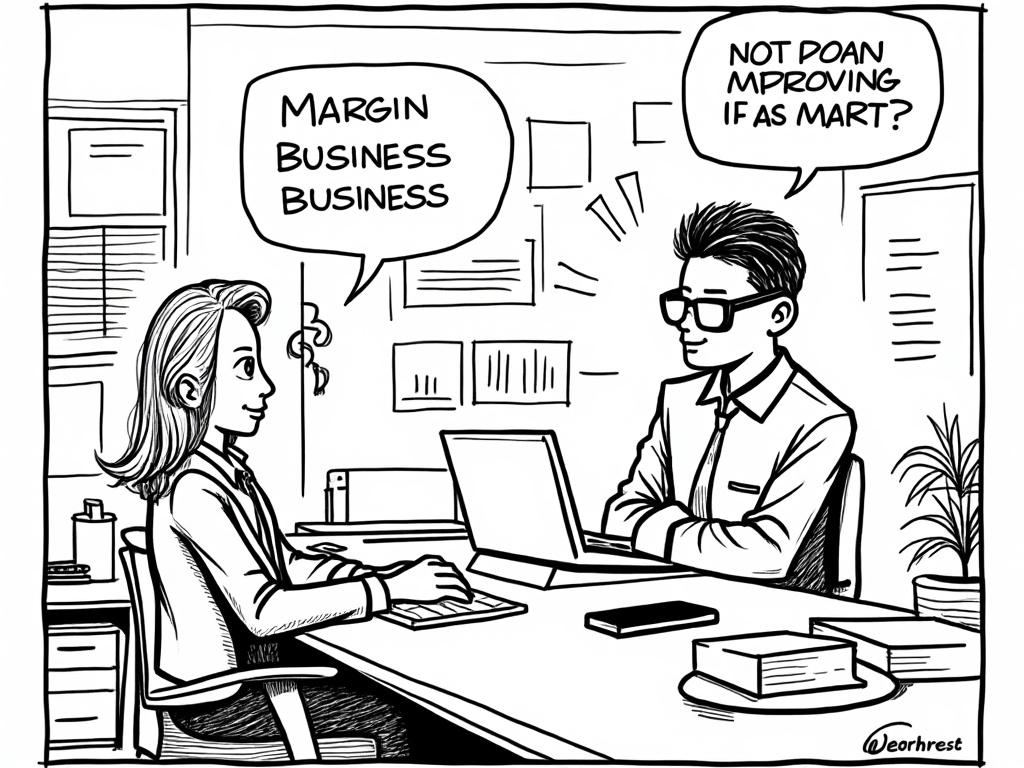
Filing VAT Returns in Germany: A Comprehensive Guide to Monthly and Quarterly Deadlines
Reading time: 12 minutes
Table of Contents
- Introduction to the German VAT System
- German VAT Basics: Rates and Registration
- VAT Filing Deadlines: Monthly vs. Quarterly
- Preparing Your VAT Return
- ELSTER: Germany’s Electronic Tax Filing System
- Common Challenges and How to Overcome Them
- Late Filing Penalties and How to Avoid Them
- Strategic Approaches to VAT Management
- Conclusion
- Frequently Asked Questions
Introduction to the German VAT System
Navigating Germany’s Value Added Tax (VAT) system—known locally as Umsatzsteuer or Mehrwertsteuer—can feel like deciphering a complex puzzle with moving parts. Whether you’re a business owner new to the German market, a financial controller managing international tax compliance, or a freelancer trying to stay on the right side of German tax authorities, understanding the VAT filing regime is non-negotiable.
Let’s be clear: The German tax system values precision and punctuality above all. The consequences of missing deadlines aren’t just financial penalties—they can impact your reputation with the Finanzamt (tax office) for years to come.
In this comprehensive guide, we’ll decode Germany’s VAT filing requirements with a particular focus on the crucial question many businesses face: Should you file monthly or quarterly returns? We’ll provide practical strategies, real-world examples, and expert insights to help you navigate this essential aspect of German business compliance.
German VAT Basics: Rates and Registration
Before diving into filing deadlines, let’s establish a solid foundation of Germany’s VAT framework.
VAT Rates in Germany
Germany operates with three VAT rates:
- Standard rate (19%): Applied to most goods and services
- Reduced rate (7%): Applied to essential items including food, books, newspapers, public transportation, and cultural services
- Zero rate (0%): Applied to certain cross-border transactions and exports
Understanding which rate applies to your specific business activities is the first step in proper VAT management. Misclassification can lead to under or overpayment, both of which create unnecessary complications.
VAT Registration Requirements
In Germany, businesses must register for VAT in the following circumstances:
- When annual turnover exceeds €22,000 (since January 2023, previously €17,500)
- When a business voluntarily opts to register (often beneficial for input tax recovery)
- When a non-German business makes taxable supplies in Germany
Registration is completed with the local tax office (Finanzamt) based on your business location. Upon registration, you’ll receive a tax number (Steuernummer) for domestic use and a VAT identification number (Umsatzsteuer-Identifikationsnummer or USt-IdNr) for EU transactions.
“Many businesses underestimate the importance of determining the correct filing frequency from the start. Making an informed decision based on your specific business profile can save significant administrative burden and improve cash flow management.” — Dr. Monika Weber, German Tax Advisor
VAT Filing Deadlines: Monthly vs. Quarterly
The German tax system determines your filing frequency based primarily on your previous year’s VAT liability. This creates a tiered system that balances tax collection efficiency with administrative burden for businesses.
Monthly Filing Requirements
You’ll need to file monthly VAT returns if:
- Your previous year’s VAT liability exceeded €7,500
- You’re a newly registered business (typically for the first two years)
- You had a significant VAT refund position in the previous year
Monthly filers face tight deadlines: VAT returns must be submitted and any tax due must be paid by the 10th day of the following month. However, a universal filing extension to the 10th of the month after (effectively giving you an extra month) is typically granted upon request.
Case Study: TechSolutions GmbH
Consider TechSolutions GmbH, a software development company with annual VAT payments of €9,800. As a monthly filer, their January VAT return would be due by February 10th. With the automatic extension, they can file by March 10th, but must ensure their payment reaches the tax office by the deadline to avoid penalties.
While their financial controller initially viewed monthly filing as a burden, they realized the regular cadence actually improved their cash flow forecasting and reduced the risk of unexpected large payments.
Quarterly Filing Requirements
You qualify for quarterly VAT returns if:
- Your previous year’s VAT liability was less than €7,500 but more than €1,000
- You’ve established a reliable tax compliance history
For quarterly filers, returns must be submitted by the 10th day of the month following the quarter end. The quarters align with calendar quarters:
- Q1 (January-March): Due by April 10th
- Q2 (April-June): Due by July 10th
- Q3 (July-September): Due by October 10th
- Q4 (October-December): Due by January 10th
Again, the universal extension typically moves these deadlines to the 10th of the following month.
Comparison: Monthly vs. Quarterly Filing
| Aspect | Monthly Filing | Quarterly Filing | Annual Filing |
|---|---|---|---|
| Administrative Burden | High (12 filings per year) | Medium (4 filings per year) | Low (1 filing per year + advanced payments) |
| Cash Flow Impact | Smaller, more frequent payments | Larger payments less frequently | Annual reconciliation with advance payments |
| Error Detection | Faster identification of issues | Moderate delay in identifying issues | Significant delay in identifying issues |
| Typical Business Size | Medium to large enterprises | Small to medium businesses | Micro-businesses and some freelancers |
| Extension Availability | Yes, typically granted | Yes, typically granted | Limited, special circumstances only |
Annual Filing Option
For very small businesses with an annual VAT liability below €1,000, an annual filing option may be available. However, these businesses typically still make quarterly advance payments based on the previous year’s liability, with a final reconciliation in the annual return.
Preparing Your VAT Return
Preparation is key to meeting Germany’s strict VAT deadlines. A systematic approach to VAT return preparation can transform this potential administrative headache into a manageable routine.
Essential Documentation
To prepare an accurate VAT return, ensure you have:
- Complete sales invoices for the period
- All purchase invoices with itemized VAT
- Records of VAT-exempt transactions
- Documentation for intra-Community supplies and acquisitions
- Evidence for zero-rated exports
- Records of reverse charge transactions
Pro tip: Organize your documentation by VAT rate and transaction type to streamline the preparation process.
Calculating VAT Due
The basic calculation for VAT due follows this formula:
Output VAT (collected from customers) – Input VAT (paid to suppliers) = VAT due/refund
However, this simple formula becomes more complex when dealing with:
- Different VAT rates within your business activities
- Reverse charge mechanisms for certain services
- Intra-Community acquisitions and supplies
- Import VAT recovery
- Partial exemption calculations
Implementing a reliable accounting system that correctly categorizes transactions by VAT treatment is essential for businesses with complex operations.
ELSTER: Germany’s Electronic Tax Filing System
ELSTER (ELektronische STeuerERklärung) is Germany’s mandatory electronic tax filing system. Since 2013, paper VAT returns are no longer accepted except in cases of extreme hardship.
Setting Up ELSTER Access
To use ELSTER, you need to:
- Register for an ELSTER account at www.elster.de
- Verify your identity (options include video identification or postal verification)
- Set up digital certificates for secure filing
- Configure access for tax advisors if they will be filing on your behalf
The registration process can take up to two weeks, so plan accordingly before your first filing deadline.
Filing Through ELSTER
You can file VAT returns through ELSTER in several ways:
- ELSTER Online Portal: Direct entry of values into the online form
- ElsterFormular: Downloadable software for offline preparation and submission
- Third-party accounting software: Many accounting programs offer direct ELSTER integration
- API integration: For businesses with custom ERP systems
Real-world Example: Handwerk Müller GmbH
Handwerk Müller GmbH, a medium-sized construction company, struggled with their quarterly VAT filings due to the complexity of different VAT rates applying to various construction services. By implementing accounting software with ELSTER integration and creating specific VAT codes for each service type, they reduced their filing preparation time from three days to half a day. More importantly, they eliminated the penalties they had previously incurred for incorrect filings.
Common Challenges and How to Overcome Them
Even seasoned businesses face obstacles in the German VAT system. Let’s examine some common challenges and practical solutions.
Challenge 1: Determining Correct Filing Frequency
Many businesses struggle to determine whether they should file monthly or quarterly returns, especially when their VAT liability fluctuates around the €7,500 threshold.
Solution: Maintain ongoing communication with your tax office. If your business situation changes significantly, proactively discuss whether your filing frequency should be adjusted. This demonstrates good faith compliance and can help avoid misunderstandings.
Challenge 2: Cash Flow Management
Monthly filing can strain cash flow for businesses with tight margins or seasonal fluctuations.
Solution: Implement robust cash flow forecasting that specifically accounts for VAT obligations. Consider:
- Synchronizing payment terms with customers to ensure VAT is collected before it must be paid to tax authorities
- Setting aside VAT collected in a separate account to avoid spending it
- For seasonal businesses, building cash reserves during peak periods to cover VAT obligations during slower months
Challenge 3: Cross-Border Complexity
Businesses engaged in international trade face additional complications with:
- Intra-Community supplies and acquisitions
- Import and export procedures
- One Stop Shop (OSS) considerations
- Reverse charge mechanisms
Solution: Consider specialized VAT compliance software that handles international transactions correctly. Additionally, periodic reviews by a tax professional with international VAT expertise can identify compliance gaps before they become problems.
Late Filing Penalties and How to Avoid Them
The German tax authorities take a strict approach to deadline compliance. Understanding the penalty regime can help you prioritize VAT compliance appropriately.
Penalty Structure
Missing VAT deadlines typically triggers:
- Late filing penalty: Up to 10% of the tax due (maximum €25,000)
- Late payment interest: Currently 0.12% per month on outstanding amounts
- Enforcement surcharges: Additional penalties for continued non-compliance
- Potential tax audit: Repeated late filing often triggers closer scrutiny
Beyond these immediate costs, a pattern of late filing can lead to the revocation of filing extensions and damaged relations with tax authorities—both costly outcomes in the long run.
Prevention Strategies
To avoid penalties:
- Set calendar reminders: Create a tax calendar with alerts 10, 5, and 2 days before deadlines
- Assign clear responsibility: Designate a specific person responsible for VAT compliance
- Implement backup procedures: Ensure coverage during employee absences or holidays
- Consider permanent extensions: Apply for the permanent deadline extension if eligible
- Use preliminary figures: If exact numbers aren’t available, file with best estimates and correct later
Remember that in the German system, filing on time with an estimate and correcting later is almost always better than filing late with perfect figures.
Strategic Approaches to VAT Management
Moving beyond mere compliance, strategic VAT management can create competitive advantages for your business.
Optimizing Filing Frequency
While your filing frequency is primarily determined by your VAT liability, there are strategic considerations:
- For businesses in refund positions: Monthly filing accelerates VAT refunds, improving cash flow
- For businesses near thresholds: Work with your tax advisor to analyze whether restructuring certain transactions might optimize your filing frequency
- For project-based businesses: Align billing schedules with VAT obligations to smooth cash flow
Technology Integration
Modern VAT management leverages technology:
- Automated data extraction: Use OCR and AI to extract VAT information from invoices
- Real-time VAT tracking: Implement systems that calculate VAT positions continuously
- Compliance calendars: Use shared digital calendars with automated reminders
- Workflow automation: Create approval workflows for VAT returns with multiple checkpoints
As one German tax director put it: “Smart VAT management isn’t about avoiding obligations—it’s about making them predictable, efficient, and aligned with your business operations.”
Conclusion
Navigating Germany’s VAT filing system doesn’t have to be a source of anxiety. While the requirements are indeed strict, they’re also predictable and manageable with the right preparation and systems.
Whether you’re filing monthly or quarterly, success comes from developing a sustainable compliance routine that fits your business. Remember that the goal isn’t just avoiding penalties—it’s creating a seamless tax compliance framework that supports your broader business objectives in the German market.
By understanding the nuances of filing deadlines, implementing robust preparation procedures, mastering the ELSTER system, and addressing common challenges proactively, you can transform VAT compliance from a potential liability into a structured business process.
Finally, remember that VAT compliance in Germany isn’t just about technical correctness—it’s about building a reputation for reliability with the tax authorities. This reputation can pay dividends in the form of fewer inquiries, smoother audits, and better working relationships with your Finanzamt.
Frequently Asked Questions
What happens if my business crosses the €7,500 VAT liability threshold mid-year?
If your VAT liability exceeds €7,500 during the year, you won’t typically be required to switch to monthly filing immediately. The tax office reviews your filing frequency based on the previous year’s results. However, if you expect a permanent increase in your tax liability, it’s advisable to contact your tax office proactively. They may adjust your filing frequency from the following year or, in some cases, mid-year if the change is significant. This proactive approach demonstrates good compliance behavior and helps you prepare for the increased administrative requirements of monthly filing.
Can I voluntarily opt for monthly VAT filing even if I qualify for quarterly?
Yes, businesses can voluntarily elect to file monthly VAT returns even when they qualify for quarterly filing. This might be advantageous if you regularly claim VAT refunds, as monthly filing accelerates the refund process. To switch to voluntary monthly filing, submit a written request to your local tax office. Be aware that once you choose monthly filing voluntarily, you’ll typically need to maintain this schedule for at least a year before switching back. Consider both the cash flow benefits and the increased administrative burden before making this decision.
How do I handle VAT filing during the transition period when first registering my business in Germany?
When first registering for VAT in Germany, you’ll typically be placed on a monthly filing schedule for at least the first two tax years, regardless of your expected VAT liability. This allows the tax authorities to assess your compliance behavior and tax situation. During this initial period, be especially diligent about meeting deadlines to establish a positive compliance record. Apply for the permanent filing extension immediately upon registration to give yourself the additional month for preparation. After two years of consistent compliance, if your annual VAT liability is below €7,500, you can request to switch to quarterly filing by submitting a formal application to your tax office.



